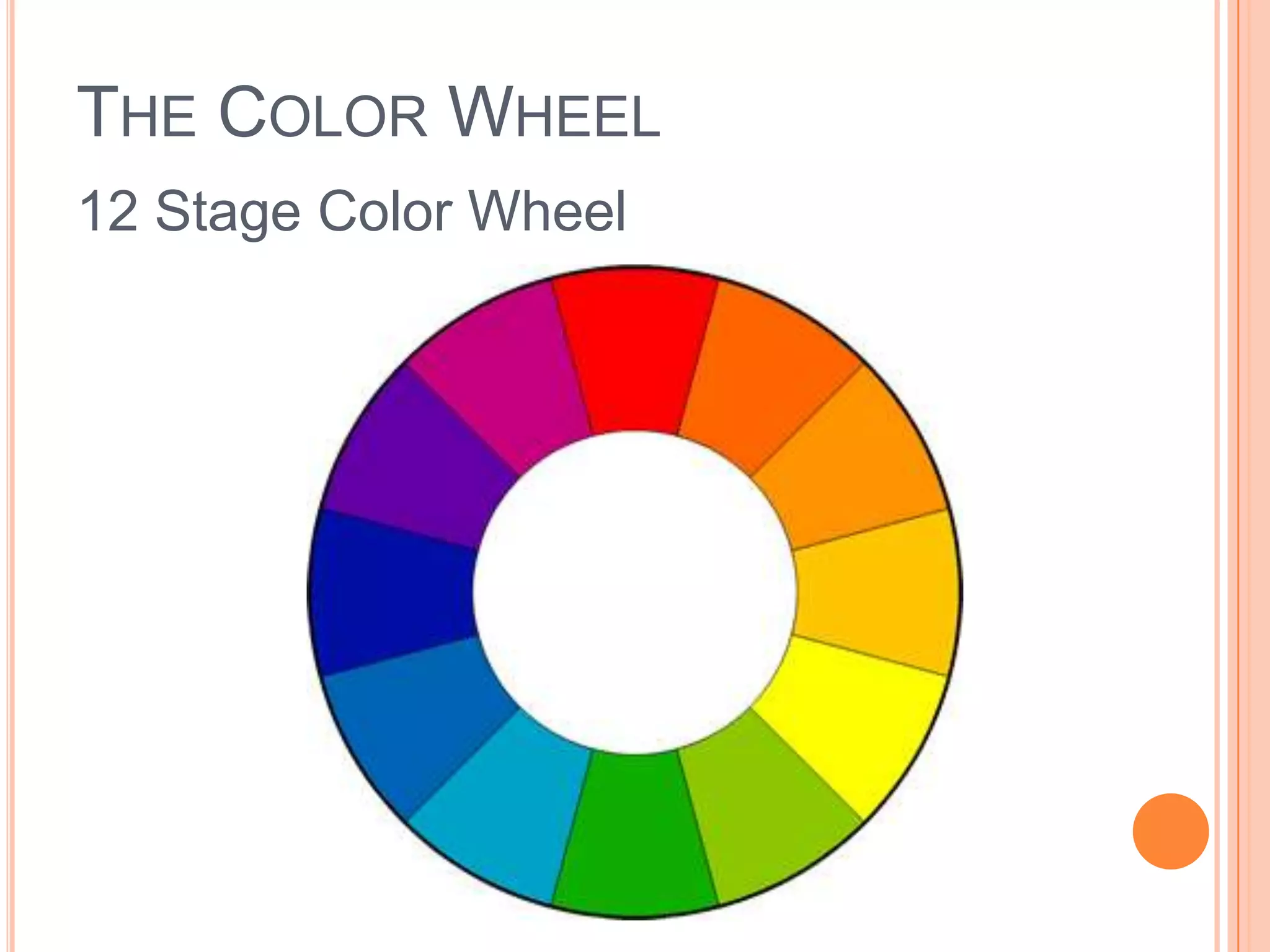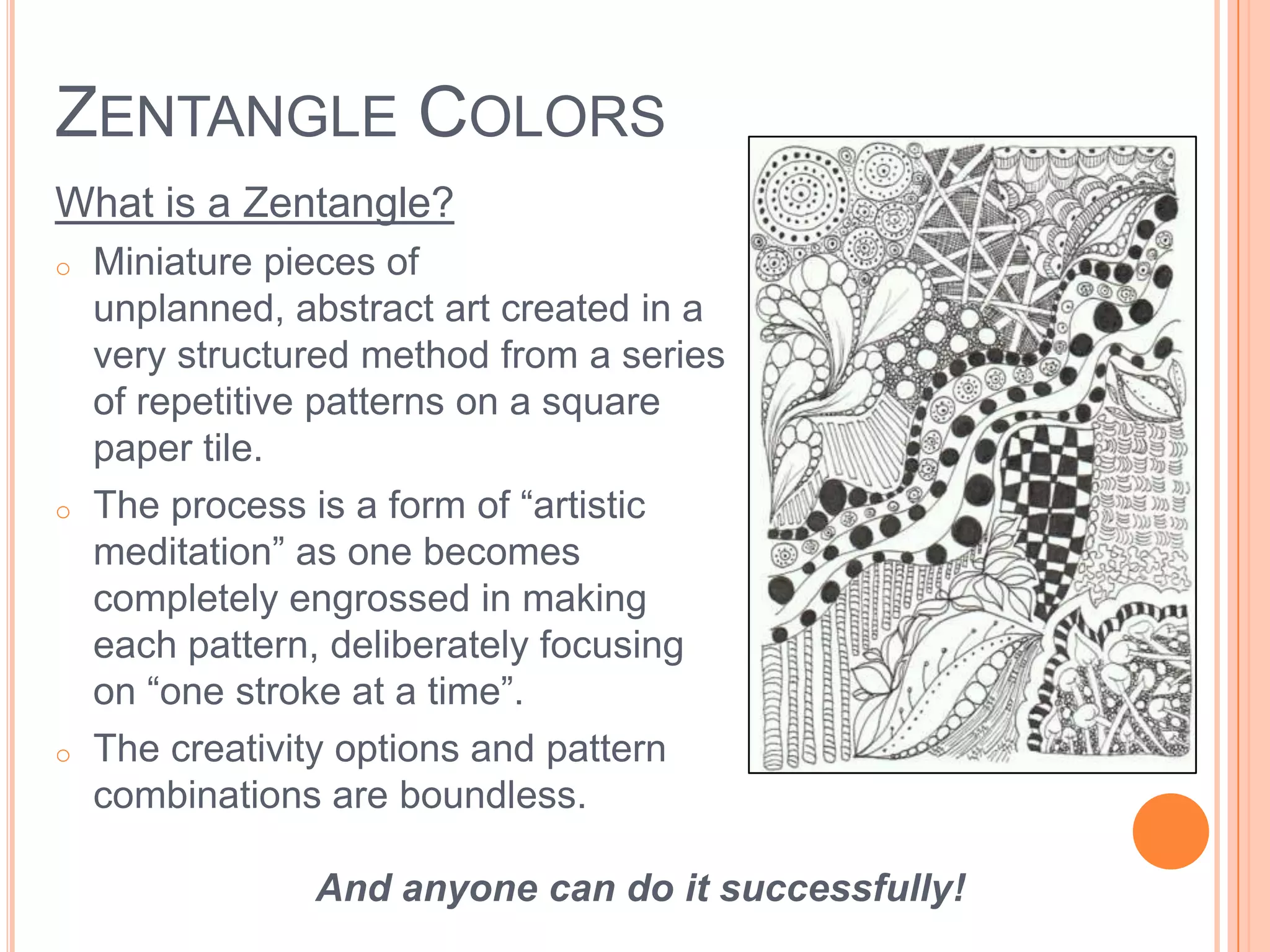This document provides information about color theory, including the three properties of color (hue, intensity, and value), different color wheels (additive and subtractive), primary and secondary colors, warm and cool colors, and color schemes like monochromatic, complementary, analogous, split complementary, and triadic. It also discusses tints, shades, and tones, and provides instructions for creating Zentangle art using repetitive patterns and doodling within a border on paper.



































